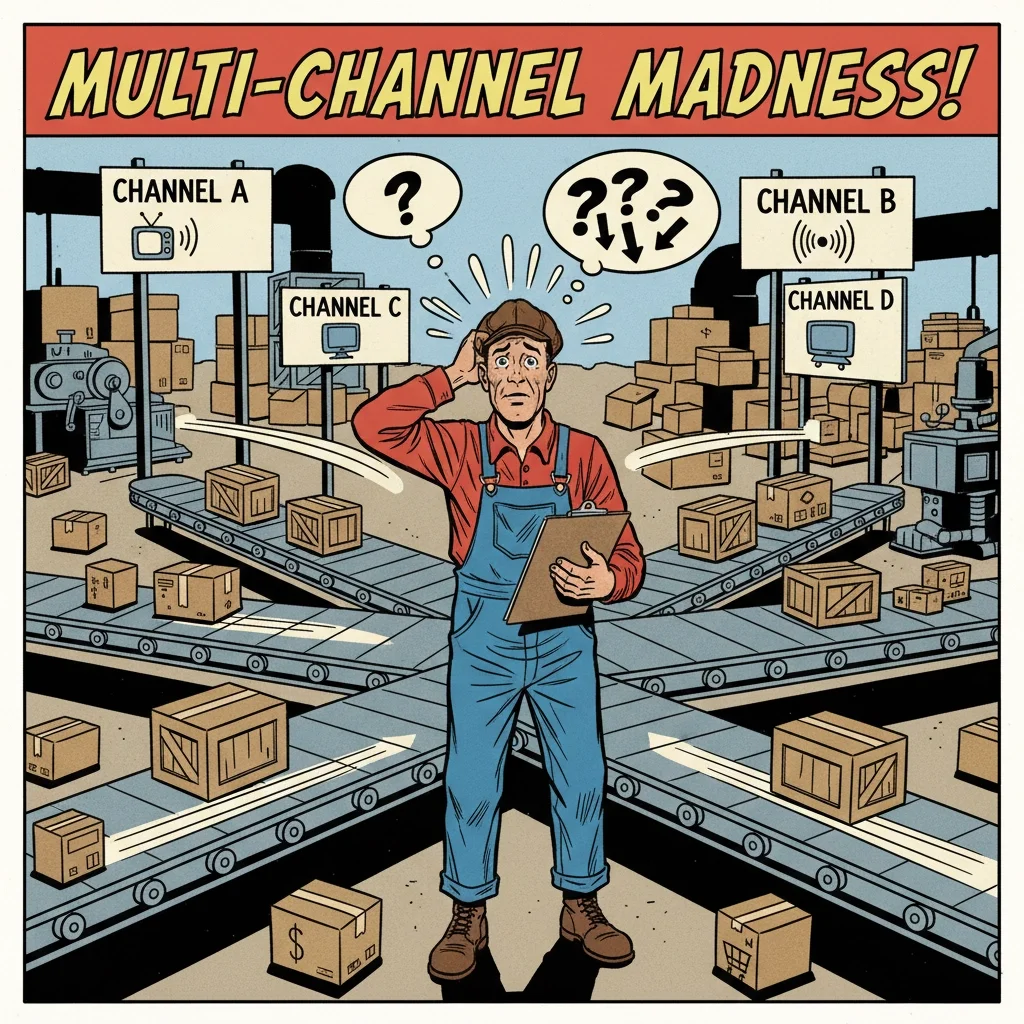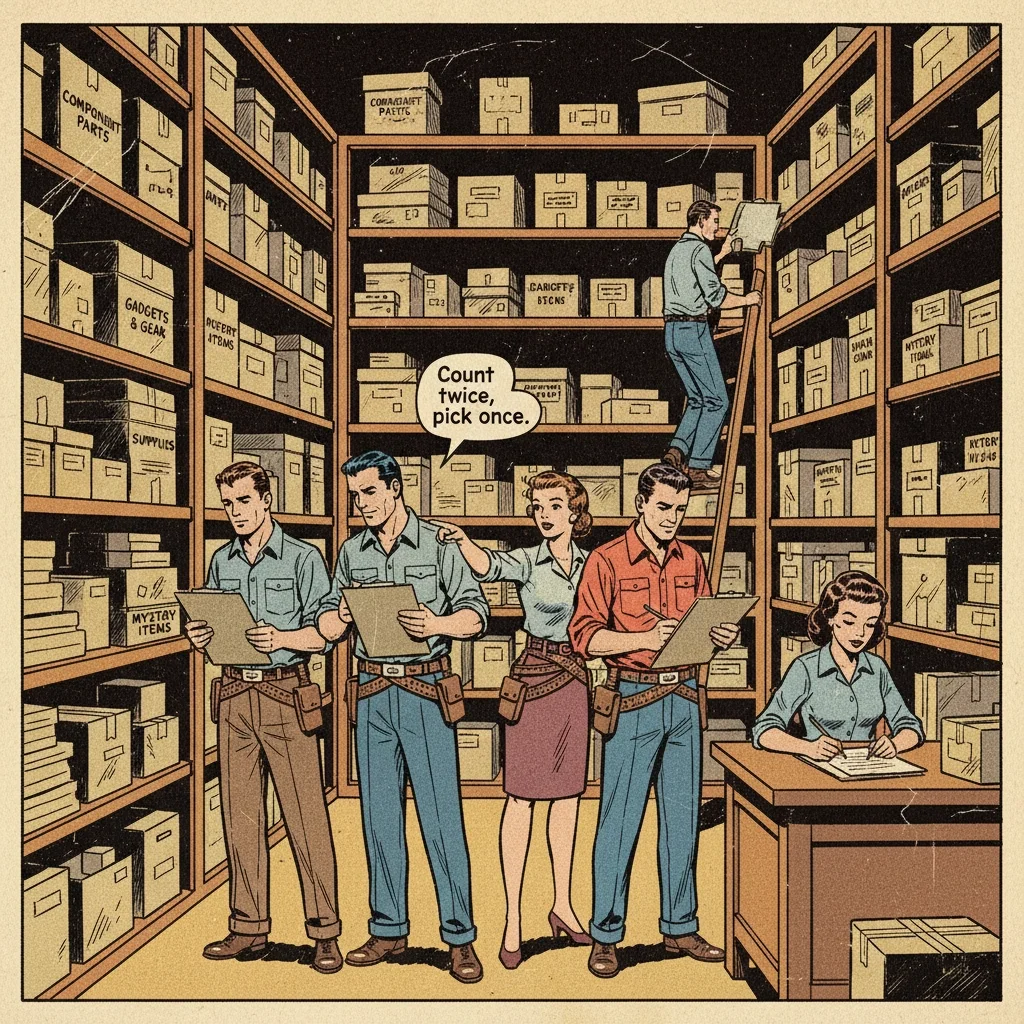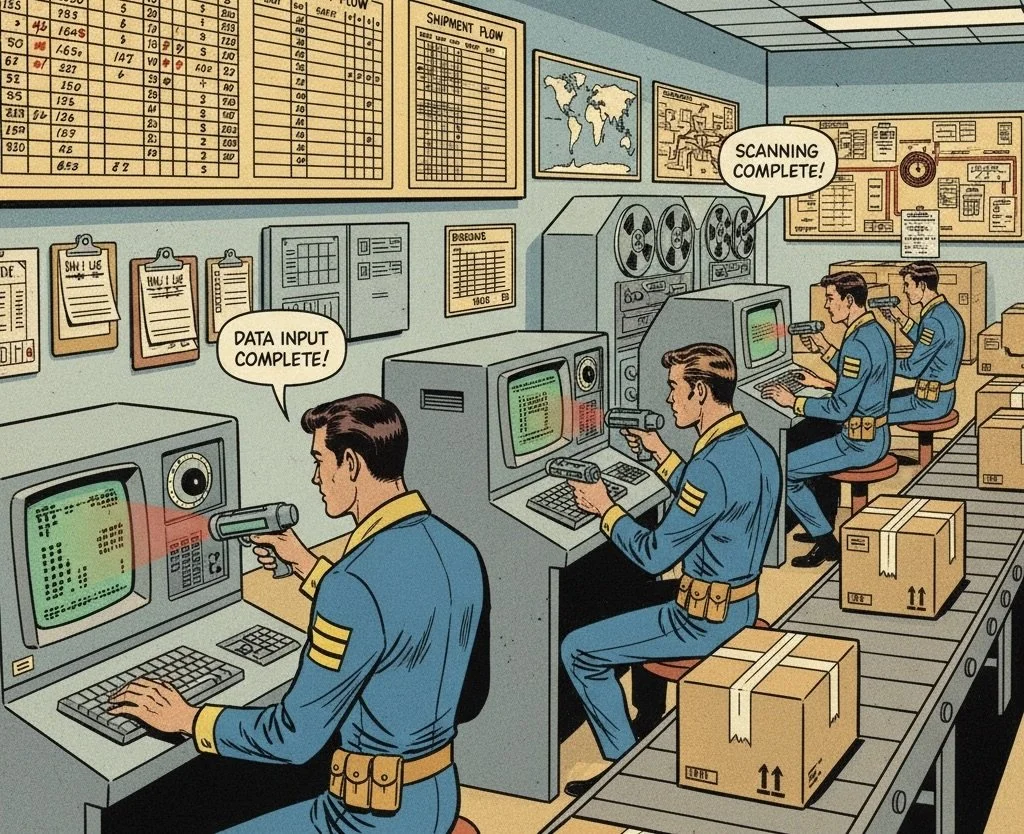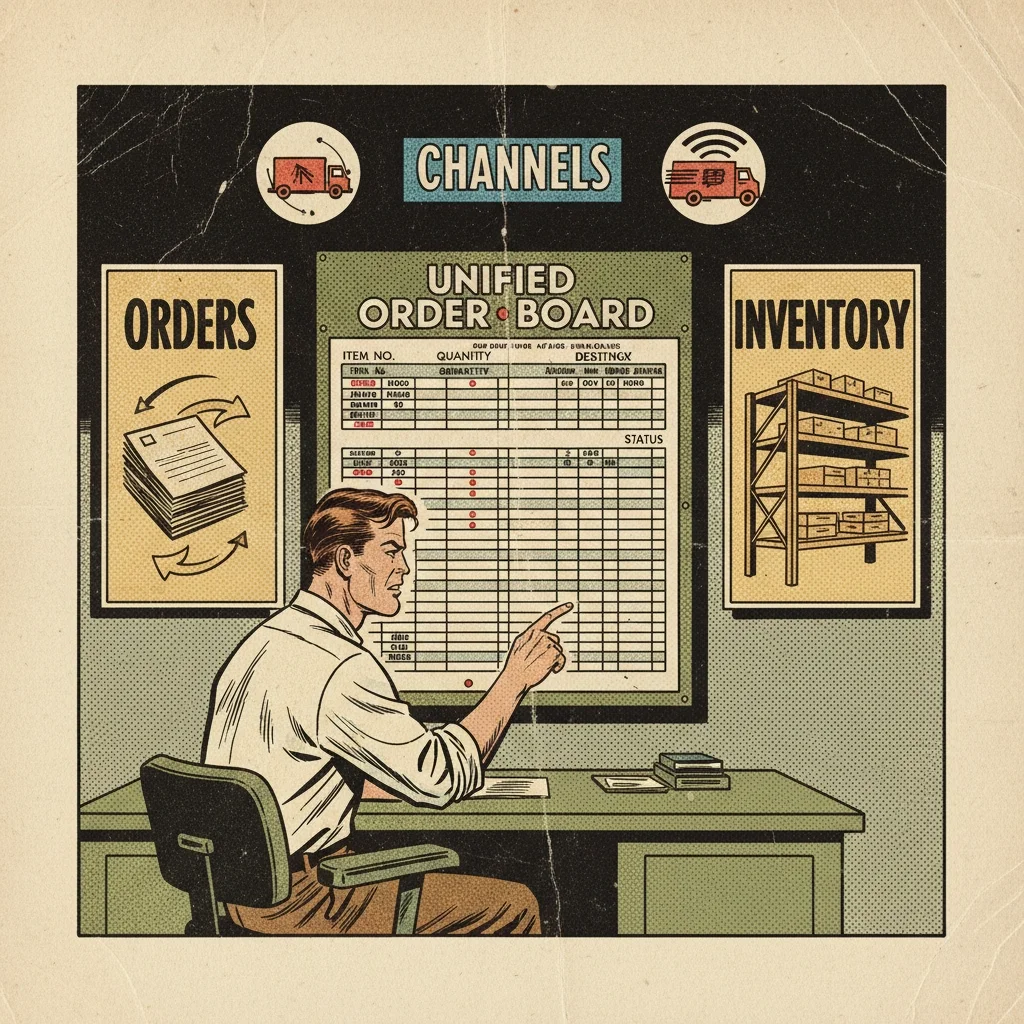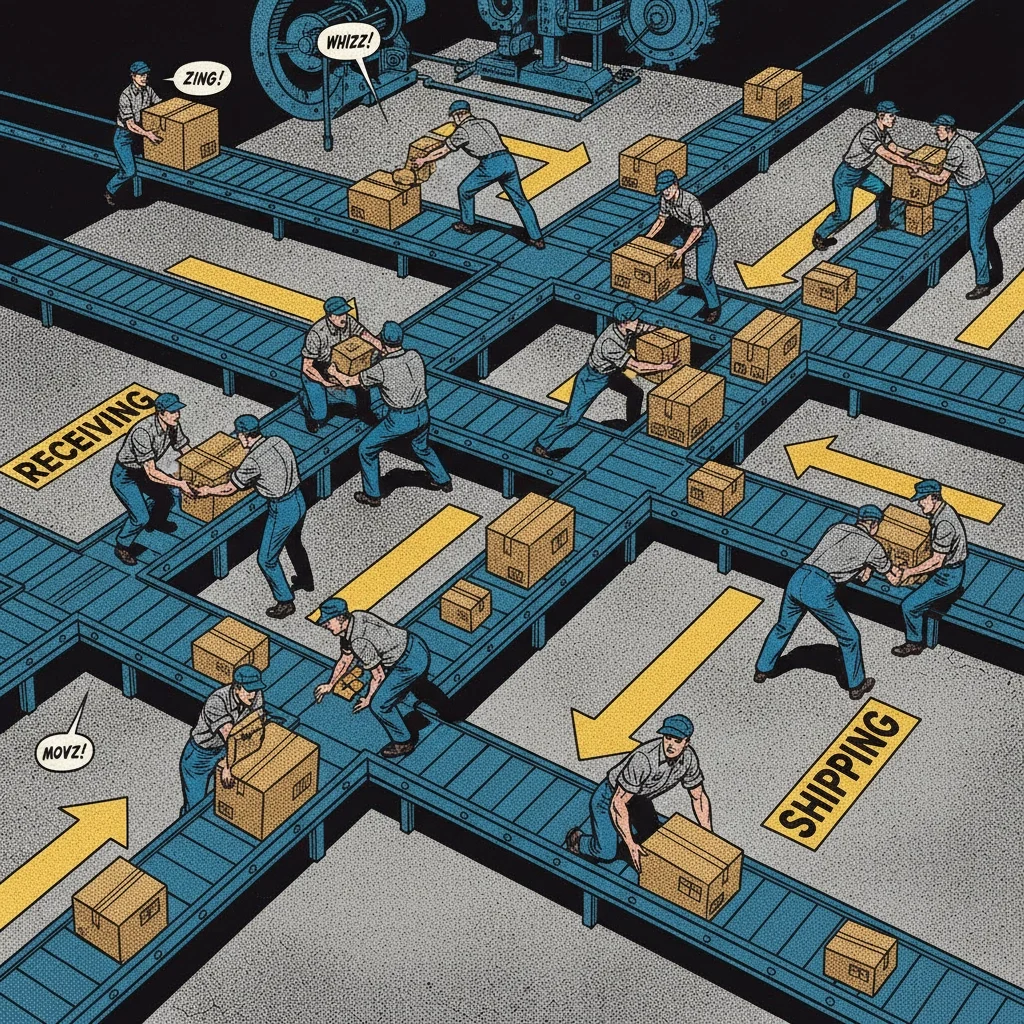7 Mistakes You're Making with Multi-Channel Fulfillment (And How a Boutique 3PL can Fix Them)
Multi-channel fulfillment sounds straightforward on paper— sell on Amazon, sell on your Shopify store, maybe your Instagram Shop, and then ship everything out. Easy, right?
Wrong!
Most eCommerce brands are making critical mistakes that cost them thousands in lost sales, frustrated customers, and operational headaches. The good news? Every single one of these problems gets solved when you partner with the right boutique 3PL.
Let's dive into the seven biggest mistakes you're probably making right now.
Mistake #1: Flying Blind Without Multi-Channel Order Management
You're juggling orders from Amazon, your website, maybe Etsy or Facebook Marketplace. Each platform has its own dashboard, inventory levels, and shipping requirements. You're constantly switching between tabs, trying to keep track of what's sold where.
This scattered approach creates chaos. You can't see your real inventory levels across channels. Returns become a nightmare. Customer service questions turn into detective work as you hunt through multiple systems to find order details.
How a boutique 3PL fixes this: A quality boutique 3PL comes with integrated order management systems that give you a single dashboard view of everything. All your channels sync in real-time. Inventory updates automatically. When a customer emails about their order from any channel, you can find it instantly.
Mistake #2: Throwing Spaghetti at the Wall (Channel Selection)
"Let's sell everywhere!" sounds like a growth strategy, but it's actually a recipe for disaster. Many brands jump into every available channel without understanding which ones their customers actually use or which ones will be profitable.
You end up spreading your marketing budget too thin, managing relationships with platforms that don't convert, and fulfilling orders that barely break even after fees and shipping costs.
How a boutique 3PL fixes this: Experienced boutique 3PLs work with brands just like yours. They've seen what works and what doesn't. They help you analyze channel performance, identify your most profitable platforms, and focus your energy where it counts. Instead of managing seven channels poorly, you can dominate three channels that actually drive growth.
Mistake #3: Drowning in Manual Data Entry
Every order requires entering shipping information, updating inventory counts, and managing tracking numbers across multiple systems. What should take minutes stretches into hours. Worse, manual entry leads to errors, wrong addresses, incorrect quantities, missed orders.
One typo in a shipping address costs you money in reshipping fees and creates an unhappy customer who might not order again.
How a boutique 3PL fixes this: Automation eliminates manual entry entirely. Orders flow automatically from your sales channels to the warehouse. Inventory updates happen in real-time. Tracking information gets sent to customers automatically. Your team stops playing data entry clerk and starts focusing on growing your business.
Mistake #4: Treating Omnichannel Like a Buzzword Instead of a Strategy
Omnichannel isn't just selling on multiple platforms, it's creating a seamless experience where customers can start their journey on Instagram, research on your website, and complete their purchase on mobile without friction.
Most brands think omnichannel means being everywhere. Really, it means being strategic about how your channels work together to serve customers better.
How a boutique 3PL fixes this: Boutique 3PLs understand the bigger picture. They evaluate how your fulfillment operations support your overall customer experience. They ensure your packaging, shipping speeds, and communication flows work together across all channels. When someone orders from your Instagram shop, they get the same great experience as your website customers.
Mistake #5: Treating Your 3PL Like a Shipping Service Instead of a Partner
Many brands view fulfillment as purely transactional, "here are my products, please ship them when orders come in." This vendor mentality misses the strategic value a good fulfillment partner brings to your business.
When problems arise (and they will), this transactional relationship creates finger-pointing instead of collaborative problem-solving.
How a boutique 3PL fixes this: The best boutique 3PLs function as an extension of your team. They participate in product development discussions, offer packaging recommendations, help optimize shipping costs, and proactively identify operational improvements. When you're preparing for a big marketing campaign, they're planning inventory needs with you, not just waiting for orders to arrive.
Mistake #6: Operating Without Clear Systems and Standards
Your inventory management is inconsistent. Product labels vary from shipment to shipment. Sometimes you remember to update SKUs, sometimes you don't. Your 3PL receives shipments that are labeled differently every time.
This creates warehouse inefficiency, picking errors, and frustrated fulfillment teams who can't maintain quality when the foundation is unstable.
How a boutique 3PL fixes this: Quality boutique 3PLs help establish and maintain operational standards. They provide clear receiving guidelines, standardize your SKU system, and create consistent processes for everything from kitting services to returns processing. They assign dedicated team members to review every inbound shipment, ensuring everything meets standards before it hits the warehouse floor.
Mistake #7: Trying to Scale Fulfillment In-House Past Your Breaking Point
You started fulfilling orders from your garage or spare room. As sales grew, maybe you moved to a small warehouse space. Now you're hiring staff, managing real estate leases, dealing with shipping carrier relationships, and handling warehouse insurance.
The question isn't whether you can handle fulfillment: it's whether you should be handling it when you could be focusing on growing your brand.
How a boutique 3PL fixes this: Outsourcing fulfillment to a boutique 3PL eliminates the need for warehouse investment, staff management, and operational overhead. You get experienced fulfillment capabilities that scale with your growth without the capital requirements or management headaches. When you have a successful product launch or seasonal surge, they handle the volume increases seamlessly.
The Real Cost of Multi-Channel Fulfillment Mistakes
These mistakes don't just create operational headaches: they cost real money. Inventory tracking errors lead to overselling and stockouts. Manual processes waste time that could be spent on marketing and product development. Poor channel strategy spreads resources too thin to be effective anywhere.
Most importantly, fulfillment mistakes damage customer experience. Late shipments, wrong items, and poor communication turn one-time buyers into never-again customers.
How Boutique 3PLs Can Fix These Problems
Large 3PLs have standardized processes that might not fit your brand's needs. Getting someone on the phone requires navigating phone trees and ticket systems.
Boutique 3PLs operate differently. You work with dedicated account managers who understand your business. They customize processes to fit your specific needs. They offer services like handwritten notes and custom packaging that larger providers can't match.
Most importantly, boutique 3PLs grow with you. As your business evolves, they adapt their services to support your changing needs rather than forcing you to fit their rigid systems.
The difference between struggling with multi-channel fulfillment and mastering it comes down to partnership. When you work with the right boutique 3PL, you're not just outsourcing shipping: you're gaining a strategic advantage that helps you compete with much larger brands.
If you’re making any or all of these seven costly mistakes. Contact us today!

